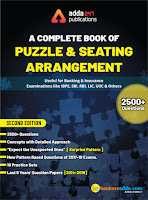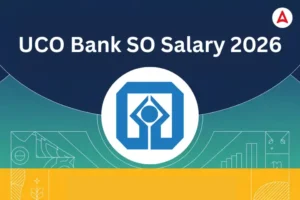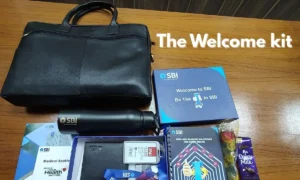IBPS RRB PO/Clerk Reasoning Quiz
The reasoning is an important part of a banking examination that holds the key for scoring well. This section tests the logic of a person while solving the questions. A good score depends on the clarity of your logical ability to crack the pattern of the question. This can only be attained if you practice daily without fail. For the IBPS RRB Mains 2019 Study Plan and also for the upcoming banking examinations including SBI Clerk, LIC ADO, IBPS PO, IBPS Clerk and all the others which are not yet officially announced like the RBI Grade B and the RBI Assistant 2019.
Directions (1-5): Study the following information carefully and answer the questions given below.
There are eight members i.e. A, B, C, D, E, F, G and H are sitting around a square table, Four of them sit at four corners while four sits at the middle of the sides. The one who sits at corner face center while who sits at the middle face outside. They like different colours, Red, Orange, Blue, Black, Pink, Green, Grey and Yellow. All the information is not necessary in same order.
G does not like Blue. Two persons sit between H and C. The one who likes yellow is an immediate neighbor of F. C sits third to the left of the one who likes Blue. The one who likes Pink sits immediate right of H. The one who likes Black sit second to the right of G. G is neither an immediate neighbor of H nor C. One person sit between A and the one who likes Black. D sits immediate left of the one who likes Orange. E likes Red. The one who likes Blue doesn’t sit at corner of table. E is not an immediate neighbor of A. The one who likes Grey is immediate neighbor of E. G does not like orange.
Q1. Who among the following sits second to the right of B?
(a) The one who likes Orange
(b) D
(c) The one who likes Red
(d) The one who likes Pink
(e) Both a and b
Q2. Which among the following Colour A likes?
(a) Red
(b) Blue
(c) Green
(d) Orange
(e) None of these
Q3. How many persons sit between A and F when counted from the left of A?
(a) Three
(b) Four
(c) Two
(d) One
(e) None of these
Q4. Who among the following likes Blue?
(a) B
(b) A
(c) G
(d) F
(e) None of these
Q5. Who among the following sits third to the left of D?
(a) H
(b) C
(c) G
(d) B
(e) None of these
Solution(1-5):
S1.Ans(c)
S2.Ans(e)
S3.Ans(b)
S4.Ans(d)
S5.Ans(d)
Direction (6-10): There are two rows given and to find out the resultant of a particular row we need to follow the following steps: –
Step 1: If an even number is followed by an odd number then the resultant will be the addition of both the numbers.
Step 2: If an odd number is followed by a perfect square then the resultant will be the difference of that square number and the odd number.
Step 3: If an odd number is followed by another odd number (but not a perfect square) then the resultant will be the addition of both the numbers.
Step 4: If an odd number is followed by an even number (but not a perfect square) then the resultant comes by multiplying the numbers.
Step 5: If an even number is followed by another even number then the resultant will be the division of first number by the second number.
Q6. Find the sum of two rows
20 4 5
17 12 11
(a) 178
(b) 205
(c) 223
(d) 225
(e) None of these
S6. Ans(d)
Sol.
For row-1:
An even number is followed by another even number = 20/4 = 5
An odd number is followed by another odd number (but not a perfect square) = 5 + 5 = 10
For row-2:
An odd number is followed by an even number (but not a perfect square) = 17×12 =204
An even number is followed by an odd number = 204 + 11 = 215
The sum is= 215+10=225
Q7. If the sum of the resultants of two rows is 18. Then find the value of X.
21 9 6
50 2 X
(a) 16
(b) 12
(c) 9
(d) 15
(e) None of these
S7. Ans(c)
Sol.
For row -1:
An odd number is followed by a perfect square = 21-9 = 12
An even number is followed by a even number = 12/6 = 2
For row – 2:
An even number is followed by another even number = 50/2 = 25
The resultant of row-2 is = 18-2 = 16
Then value of X must be = 9
Q8. Find the difference between the resultant of first and second row.
25 7 16
8 17 12
(a) 300
(b) 298
(c) 302
(d) 287
(e) None of these
S8. Ans(b)
Sol.
For row – 1:
An odd number is followed by another odd number (but not a perfect square) = 25 + 7 = 32
An even number is followed by an even number = 32/16 = 2
For row – 2:
An even number is followed by an odd number = 8 + 17 = 25
An odd number is followed by an even number (but not a perfect square) = 25×12 = 300
The difference of row-1 and row-2= 300 – 2 =298
Q9. Find the multiplication of the resultant of first and second row.
51 21 4
16 17 5
(a) 610
(b) 684
(c) 722
(d) 720
(e) None of these
S9. Ans(b)
Sol. For row – 1:
An odd number is followed by another odd number (but not a perfect square) = 51 + 21= 72
An even number is followed by another even number = 72/4 = 18
For row – 2:
An even number is followed by an odd number = 16 + 17 = 33
An odd number is followed by another odd number (but not a perfect square) = 33 + 5 = 38
The multiplication of row-1 and row-2= 18 x 38 = 684
Q10. Find the sum of the resultant of first and second row.
7 8 13
5 16 9
(a) 69
(b) 71
(c) 68
(d) 73
(e) None of these
S10. Ans(b)
Sol.
For row – 1:
An odd number is followed by an even number (but not a perfect square) = 7 x 8 = 56
An even number is followed by an odd number = 56 + 13 = 69
For row – 2:
An odd number is followed by a perfect square =16-5 = 11
An odd number is followed by a perfect square =11 – 9 = 2
The multiplication of row-1 and row-2= 69 + 2 = 71
Directions (11-13): Study the following information to answer the given questions.
In a certain code,
‘Sunday January year March’ is written as ‘bi gv oc st’
‘January April of June’ is written as ‘tm oc da pu’
‘of Sunday August Tuesday’ is written as ‘nh mk tm gv’
‘June Monday year of’ is written as ‘da st rx tm’
Q11. In the given code language, what does the code ‘nh’ stand for?
(a) Either ‘Sunday’ or ‘year’
(b) Either ‘Tuesday’ or ‘August’
(c) Monday
(d) March
(e) of
Q12. What is the code for ‘April’ in the given code language?
(a) pu
(b) rx
(c) st
(d) da
(e) None of these
Q13. What is the code for ‘Year’ in the given code language?
(a) da
(b) gv
(c) tm
(d) rx
(e) st
Solution (11-13):
S11. Ans.(b)
S12. Ans.(a)
S13. Ans.(e)
Direction (14-15): Each of the questions below consists of a question and two statements numbered I and II given below it. You have to decide whether the data provided in the statement are sufficient to answer the question. Read both the statements and Give answer:
(a) If the data in statement I alone are sufficient to answer the question, while the data in statement II alone are not sufficient to answer the question.
(b) If the data in statement II alone are sufficient to answer the question, while the data in statement I alone are not sufficient to answer the question.
(c) If the data either in statement I alone or in statement II alone are sufficient to answer the question.
(d) If the data even in both statements I and II together are not sufficient to answer the question.
(e) If the data in both statements I and II together are necessary to answer the question.
(a) If the data in statement I alone are sufficient to answer the question, while the data in statement II alone are not sufficient to answer the question.
(b) If the data in statement II alone are sufficient to answer the question, while the data in statement I alone are not sufficient to answer the question.
(c) If the data either in statement I alone or in statement II alone are sufficient to answer the question.
(d) If the data even in both statements I and II together are not sufficient to answer the question.
(e) If the data in both statements I and II together are necessary to answer the question.
Q14. Among P, Q, R, S, T and U each one of them has different age, who is the youngest person?
I. P is not the youngest. T is younger than U but elder than Q.
II. Q is elder than S and P. U is younger than only R.
S14. Ans (e)
Sol.
Sol. By combining I and II
R>U>T>Q>P>S
Q15. On which day Aman born?
I: Monika exactly remembers that Aman birthday is after 15th and before 20th of month.
II: Adarsh remembers that Aman birthday is after 14th and before 18th of month.
S15.Ans(d)
If you are preparing for Bank exams, then you can also check out a video for Reasoning below:
You may also like to Read:








 UCO Bank SO Salary 2026, In-Hand Salary,...
UCO Bank SO Salary 2026, In-Hand Salary,...
 The Bank Welcome Kit: Where the Struggle...
The Bank Welcome Kit: Where the Struggle...
 IRDAI Grade A 2026 Notification, Eligibi...
IRDAI Grade A 2026 Notification, Eligibi...








